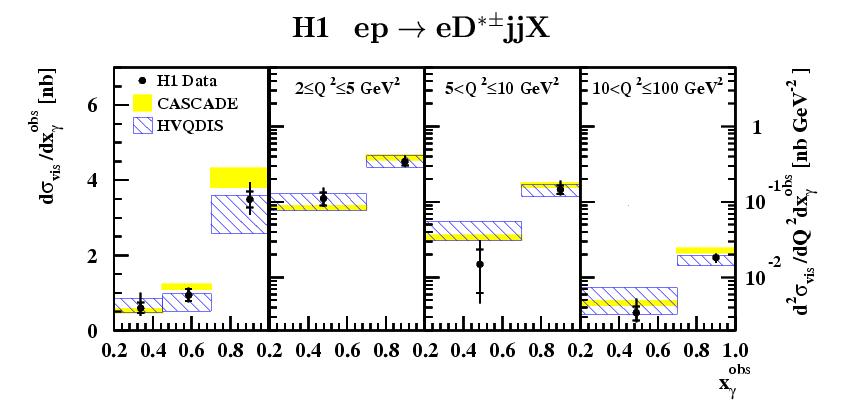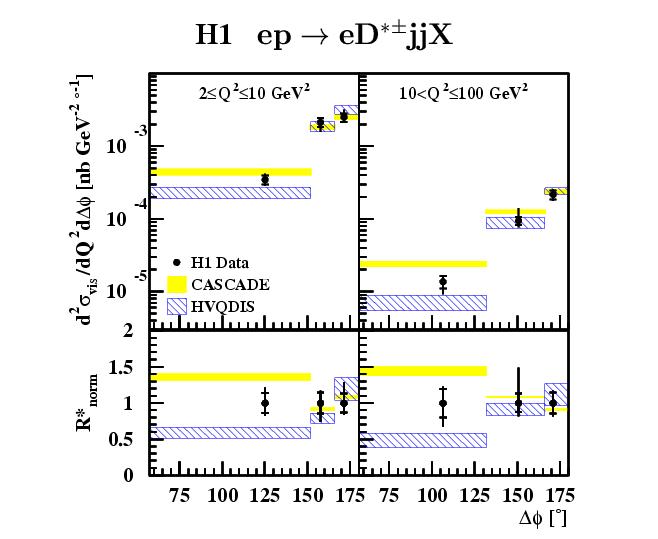

Production of D*-Mesons with Dijets in Deep-Inelastic Scattering at HERA |
At HERA heavy quarks are produced predominantly in pairs, charm and anti-charm quarks being the most frequent quark type due to the relatively low mass. The main production process is boson-gluon-fusion where a photon and a gluon originating from the electron and proton beams respectively couple to the charm and anti-charm quark pair. Charm production has been measured using different final states, in this analysis two jets are selected and a D* meson with subsequent decay into D0π→Kππ is required in one of the jets. This selection guarantees an almost complete reconstruction of the final state with adequate statistics. Reconstruction of the final state enables reconstruction of the charm quark kinematics in detail and gives access to results about the production mechanism of charm. First the contributions of direct and resolved processes are investigated with the measurements of cross sections as function of xγobs. In direct processes the complete energy of the photon enters the hard subprocess, xγobs=1, while for resolved processes only a part of the photon energy enters, and xγobs<1. It can be observed in the first figure that the behaviour of xγobs can be described in deep inelastic scattering by two different theoretical approaches, one following the NLO-DGLAP approach (HVQDIS), the other one implementing the CCFM evolution equation using unintegrated gluon densities (CASCADE). The data indicate that an additional resolved component, e.g. described by a structure function of the photon, is not needed here while it was found to be necessary in photoproduction.
Another interesting aspect of the production process of charm in DIS at HERA is the distribution
of the azimuthal angle between the two jets, Δφ, which is shown in the second figure.
In leading order this distribution consists of
a narrow peak at 180 degrees, i.e. all contributions away from this value are due to higher order
(and experimental) effects.
Disagreement shows up between
data and the NLO-DGLAP approach (HVQDIS) as well as the model based on the CCFM evolution equation using unintegrated gluon
densities (CASCADE). The former lacks higher order contributions at small angles, while the latter
overestimates the contributions in that region most probably due to a too broad unintegrated
gluon density. Such deviations have also been observed in other processes studied at HERA, e.g.
charm production with jets in photoproduction or in dijet events in DIS.

